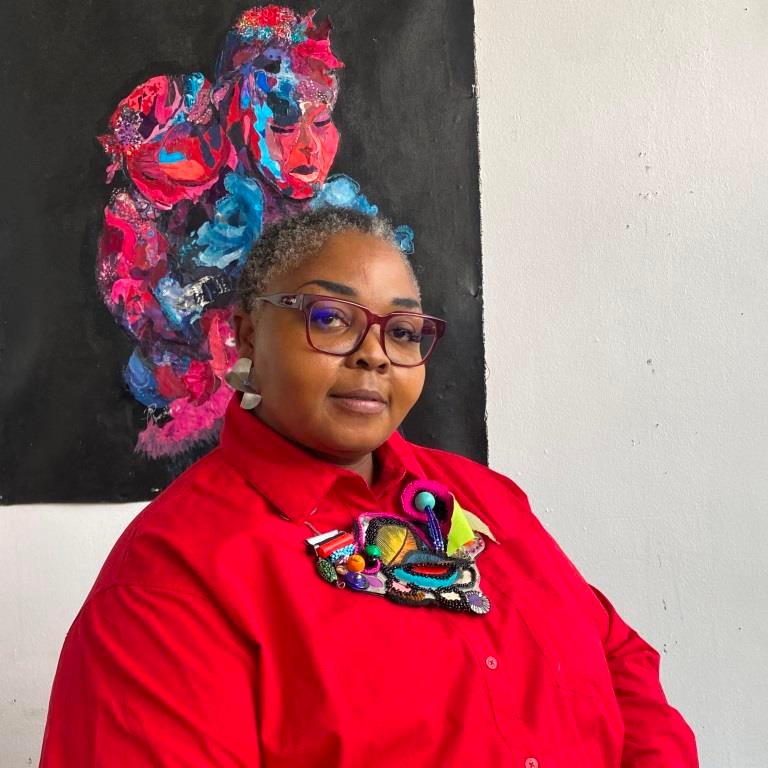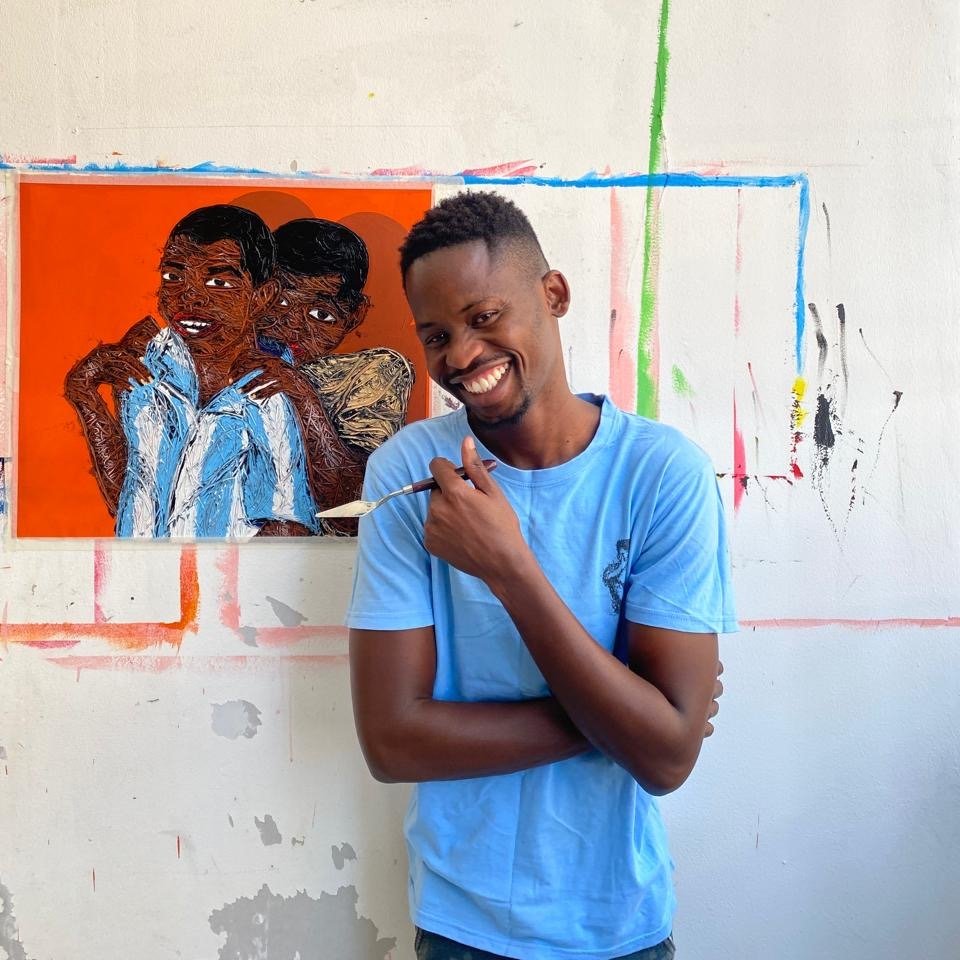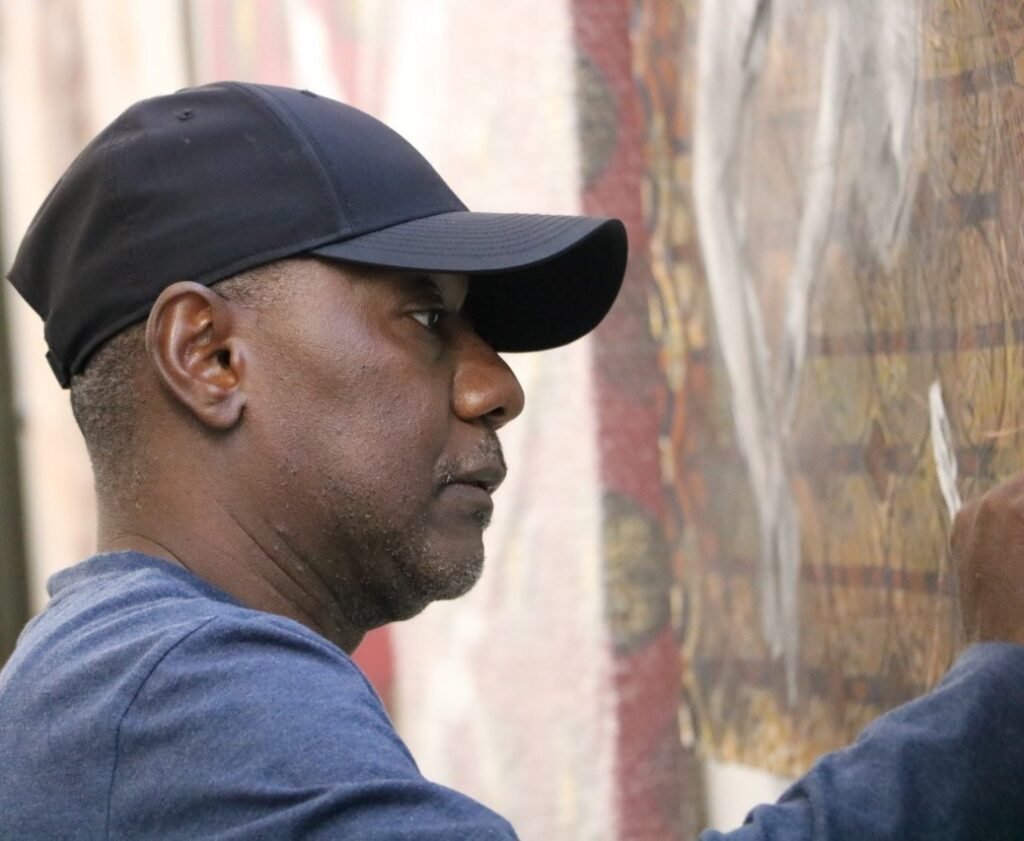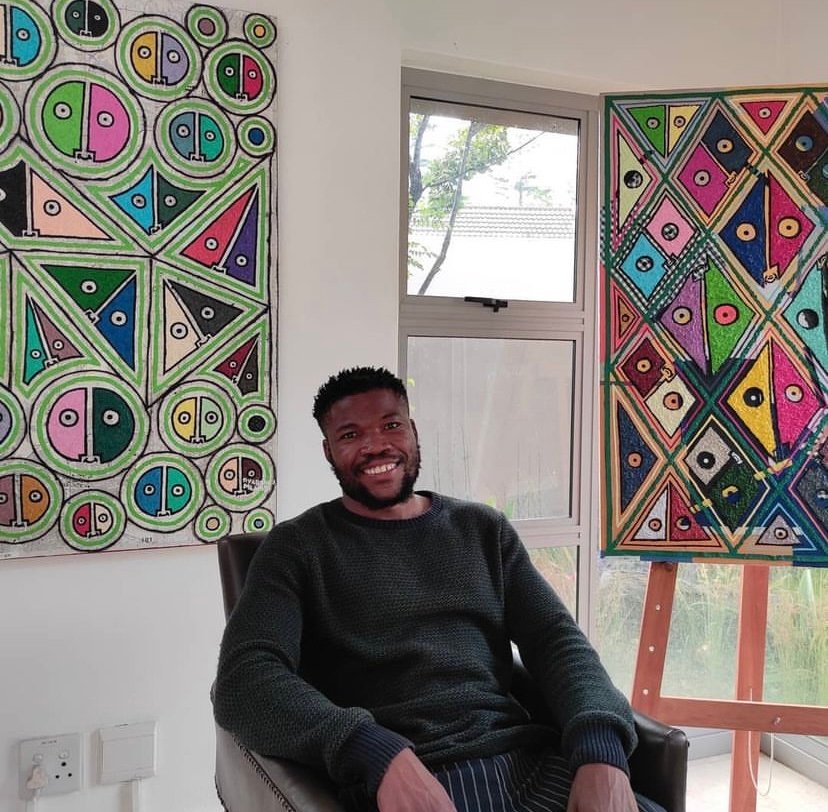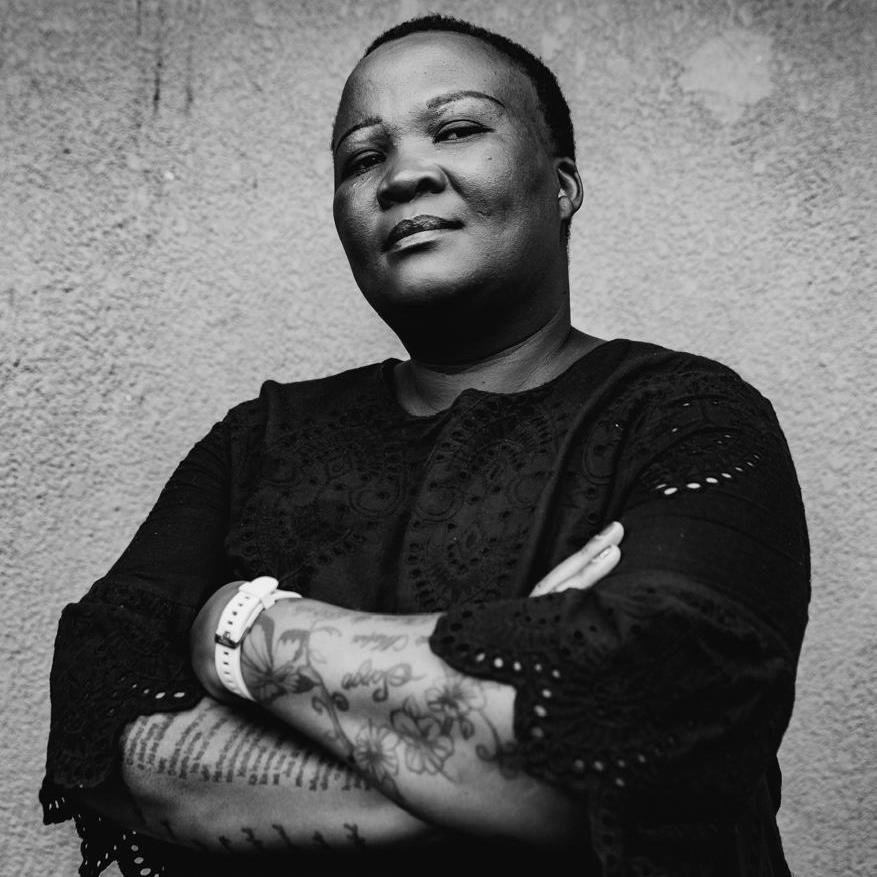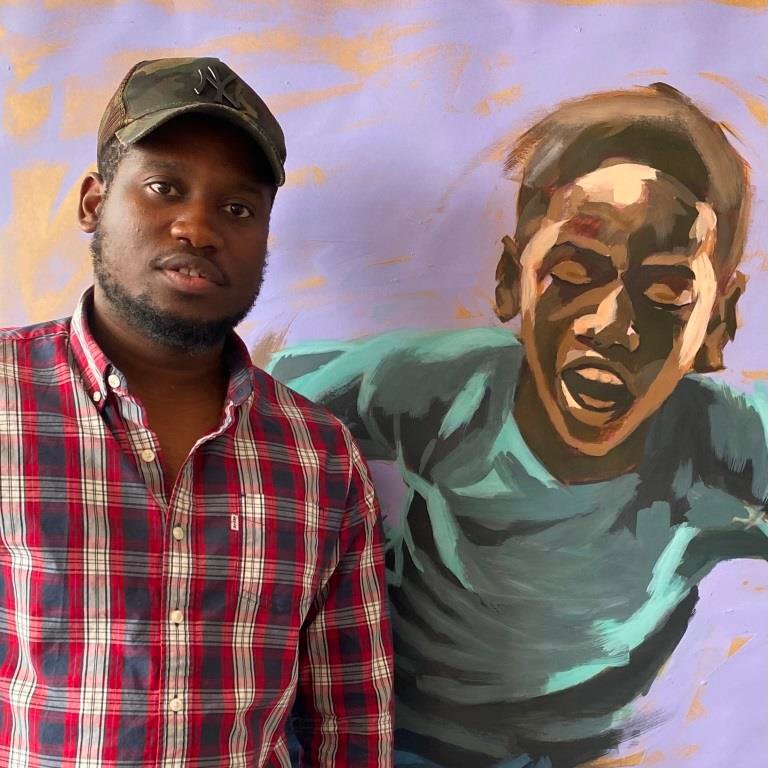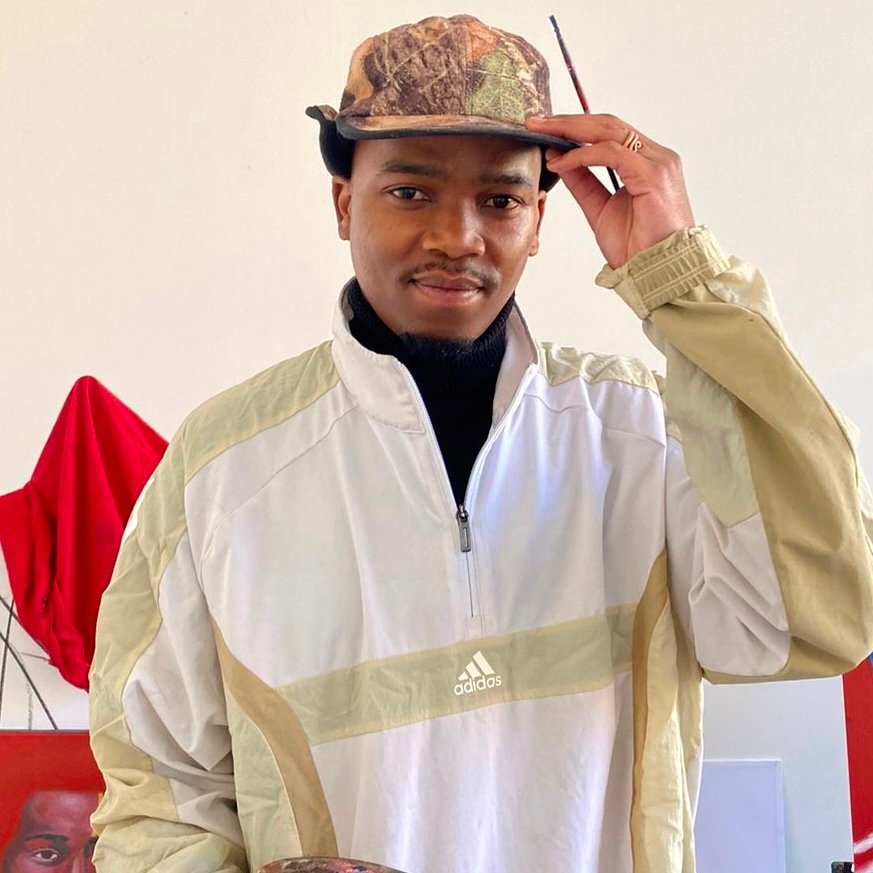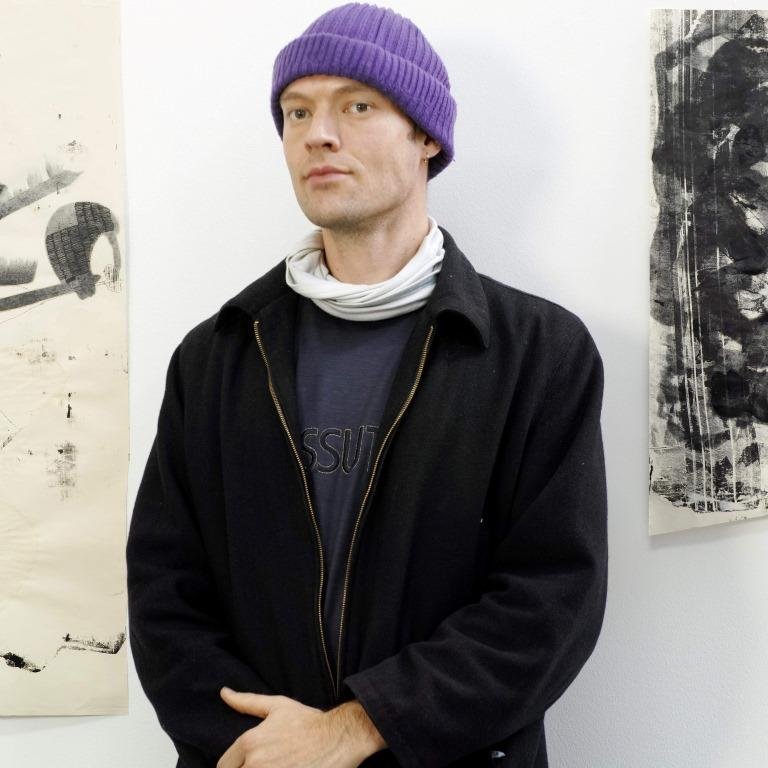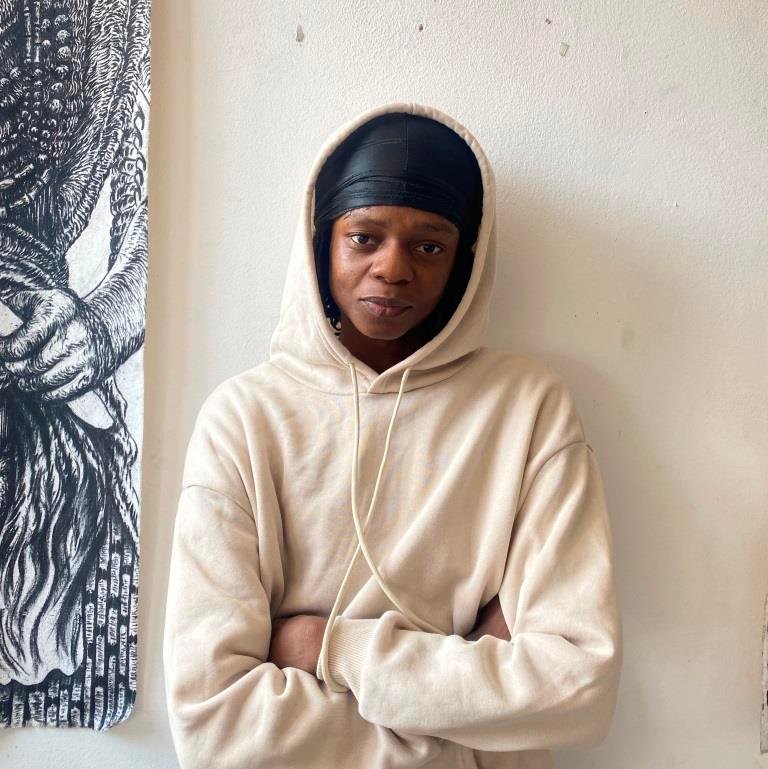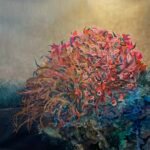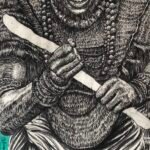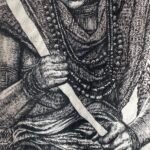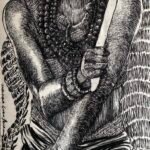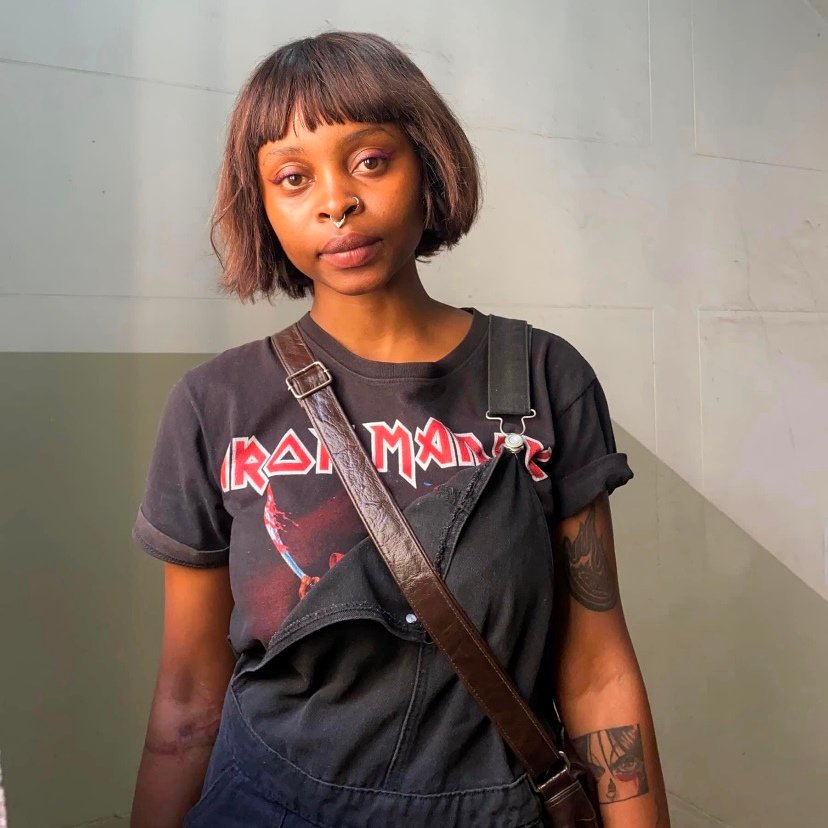
Keke Nkadimeng
A Creator and Healer Through Performance Art
Introduction
Keke Nkadimeng, a versatile and dynamic artist, curator, and young professional from Limpopo, South Africa, is a force to be reckoned with in the world of contemporary art. While her journey into the creative world began with a formal education in fashion design at the University of Johannesburg, it is in the fusion of fashion, performance, and visual art that Keke has found her true artistic voice. Based at the Ellis Art House Studios, Nkadimeng has become a vital contributor to the South African art scene, using performance art and her body as primary tools for exploration and expression.
Nkadimeng’s work is both personal and political, particularly in the context of her body as a medium, as well as her exploration of the intersection between spirituality, healing, and art. She draws from her ancestral heritage, being a descendant of traditional healers and diviners, and channels this spiritual connection into her work. Through her art, Nkadimeng seeks to challenge social norms, explore the limitations imposed on Black women’s bodies, and provide a platform for healing and self-expression.
Early Life and Education
Keke Nkadimeng was born and raised in Limpopo, a province known for its rich cultural heritage and spiritual traditions. From an early age, Nkadimeng was immersed in a world that valued creativity and cultural expression, but it was her journey into fashion design that ultimately unlocked her deeper artistic calling. After completing her studies in fashion at the University of Johannesburg, Nkadimeng began to explore the creative possibilities that lay beyond the realm of textiles and garments. It was during this time that she discovered her passion for performance art—a medium that allowed her to push the boundaries of her own creativity, while exploring more complex themes related to identity, culture, and spirituality.
Fashion design, while initially a means of creative expression, became the foundation upon which Nkadimeng began to build a more conceptual approach to art. Through the marriage of fashion and performance, she was able to further develop her understanding of the body as a vehicle for storytelling. In fact, the use of the body in performance art would become a central theme in Nkadimeng’s practice, allowing her to express herself in new and transformative ways.
The Evolution of Keke Nkadimeng’s Art Practice: Performance Art and the Body
Performance art—a medium where the artist’s own body is used as the central instrument of expression—has a long history in the visual arts, tracing its roots to the early Futurist productions and Dada cabarets of the 1910s. As a medium, it has continued to evolve, incorporating elements of theater, dance, music, and visual arts. According to the Tate Gallery, performance art “has no fixed medium and can involve many different materials, including the artist’s own body” (Tate, Performance Art).
For Nkadimeng, performance art offers the ability to communicate ideas and experiences that transcend the limitations of traditional visual art forms. It is not just about the creation of an aesthetic object, but rather the live experience and the audience’s engagement with the artist’s body as the subject of the work. Nkadimeng often uses her own body to address issues of identity, spirituality, and healing—issues that are particularly urgent for Black women, who have faced historical oppression, both physically and symbolically, in South Africa.
The exploration of the body in her art is also tied to the painful legacy of apartheid and its lingering effects on the Black South African identity, particularly regarding the Black woman’s body. For Nkadimeng, performance art becomes a way of reclaiming and empowering the body, confronting societal taboos, and pushing back against the traditional roles imposed on women. The act of using the body as both the medium and the message challenges these oppressive structures, while offering an opportunity for catharsis and healing.
Artistic Influences and Inspirations
Nkadimeng’s work is informed by a wide range of artistic influences, spanning both modern and contemporary art history, as well as her personal experiences and cultural heritage. One of the most significant influences on her abstract visual language is the work of Willem de Kooning, the Dutch-American painter known for his expressive and energetic brushwork, and Kandinsky, whose use of abstraction as a means of spiritual expression deeply resonates with Nkadimeng’s own pursuit of healing through art. Additionally, she draws inspiration from Joan Miró and his colorful, playful abstractions that evoke universal themes of freedom and imagination.
However, Nkadimeng’s artistic practice is not solely shaped by Western modernist traditions. She also looks to South African artists such as Thokozani Mthiyane, whose use of finger painting has influenced her approach to creating highly tactile, expressive abstract works. Mthiyane’s intimate connection with the material—painting directly with his fingers—resonates with Nkadimeng’s own practice of engaging her body as a tool for expression. The performative element of painting, especially in the way Mthiyane uses his fingers to create texture and form, mirrors Nkadimeng’s desire to integrate her body into her artwork, further bridging the gap between artist and subject.
Nkadimeng’s interest in spirituality and healing also informs her work, particularly in relation to her family’s heritage of traditional healers and diviners. Raised in a family deeply connected to African spiritual practices, Nkadimeng’s understanding of art is inseparable from her beliefs about the body, the spirit, and the healing process. Her exploration of art as a means of spiritual healing is rooted in the teachings of Credo Mutwa, a renowned South African traditional healer and spiritual leader, whose insights on African spirituality and healing have had a profound influence on Nkadimeng’s worldview. Additionally, she finds resonance in the works of Paulo Coelho, whose books on personal transformation and spirituality offer insights into the power of the inner self and the importance of healing.
Themes in Nkadimeng’s Work: Healing, Spirituality, and the Body
One of the most compelling themes in Keke Nkadimeng’s work is healing—both individual and collective. Drawing from her family’s traditions of divination and spiritual healing, Nkadimeng incorporates tools and symbols from different cultures that are used in rituals to heal the spirit and the body. In her work, these healing practices are not only symbolic but also serve as a tool for transformation and empowerment. Through performance, Nkadimeng seeks to create an environment that promotes self-healing and invites her audience to reflect on their own journeys toward wholeness.
Nkadimeng’s exploration of the Black woman’s body is also central to her artistic practice. In South Africa, the body of Black women has historically been a site of control and oppression, particularly under the apartheid regime. Nkadimeng uses her body to reclaim this space, confronting the limitations imposed on women’s bodies by both society and history. Performance art, with its ability to engage both the body and the audience, allows Nkadimeng to express the physicality of these limitations while simultaneously breaking free from them. Through movement, gesture, and physical presence, she challenges the traditional narratives that have often sought to diminish or silence the experiences of Black women.
Her abstract paintings also play a vital role in her exploration of healing and spirituality. These works are often multi-layered, incorporating geometric patterns and vibrant colors that symbolize different aspects of her spiritual and emotional journey. While these paintings can be seen as purely aesthetic, they also serve as a reflection of her inner world—one that is constantly evolving and seeking balance.
Vision for the Future
As an artist, curator, and young professional, Nkadimeng envisions a future where her work continues to evolve, bringing together diverse elements of African spirituality, performance art, and visual art. She sees herself as a progressive artist—one who is not only exploring her own personal healing journey but also providing a platform for others to explore their own stories. Nkadimeng’s work is deeply connected to her vision of art as a tool for social change, healing, and transformation.
Her future as an artist is one that embraces both the historical and the contemporary, blending the ancient traditions of her ancestors with the forward-thinking approach that defines her work today. Through her art, she seeks to build bridges between cultures, disciplines, and generations, encouraging a broader understanding of art as a means of spiritual connection and personal empowerment.
Conclusion
Keke Nkadimeng is a rising force in South African contemporary art. Through her exploration of performance art, healing, and spirituality, she has created a body of work that speaks to the power of art to heal, empower, and provoke change. Drawing from her diverse influences—from traditional African healing practices to Western modernist movements—Nkadimeng’s art is a deeply personal yet universal expression of identity, culture, and transformation. As she continues to develop her practice, Nkadimeng remains committed to creating art that connects the body, spirit, and soul, offering both herself and her audience a path toward healing, growth, and self-discovery.
On Auction
-
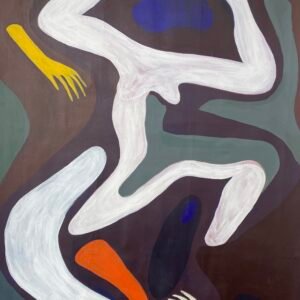 Midnight FibulaAuction Expired
Midnight FibulaAuction Expired -
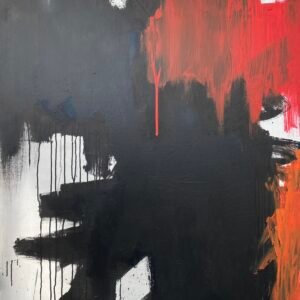 Insidious TearAuction Expired
Insidious TearAuction Expired -
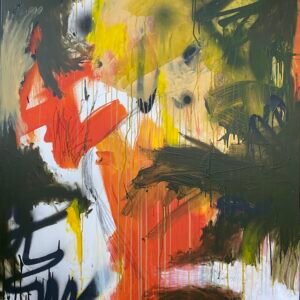 Everest IIAuction Expired
Everest IIAuction Expired -
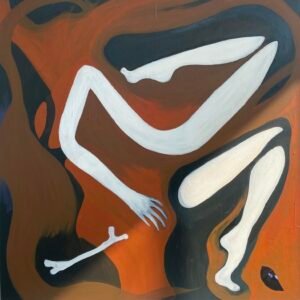 Let your spirit guide youAuction Expired
Let your spirit guide youAuction Expired

